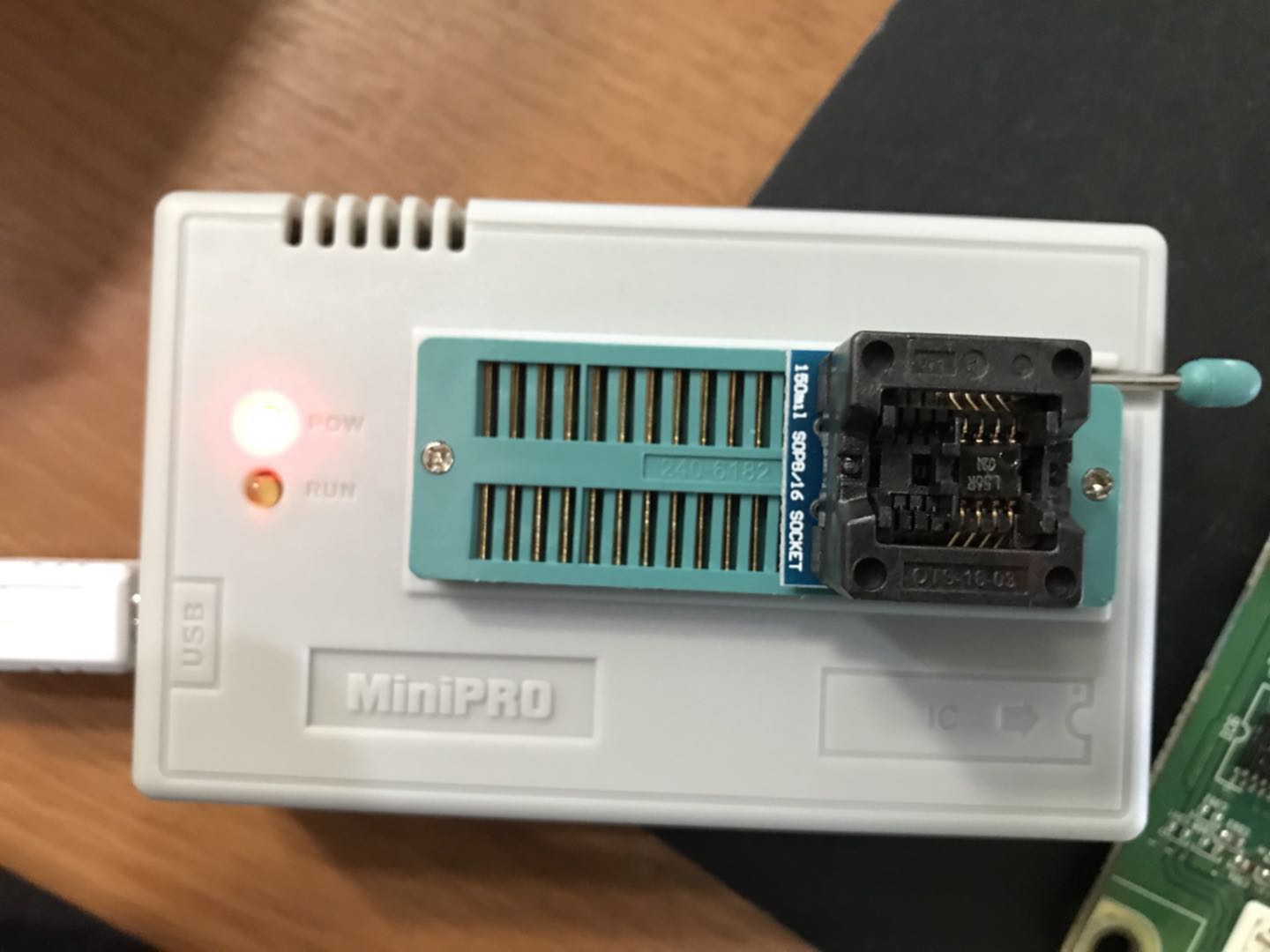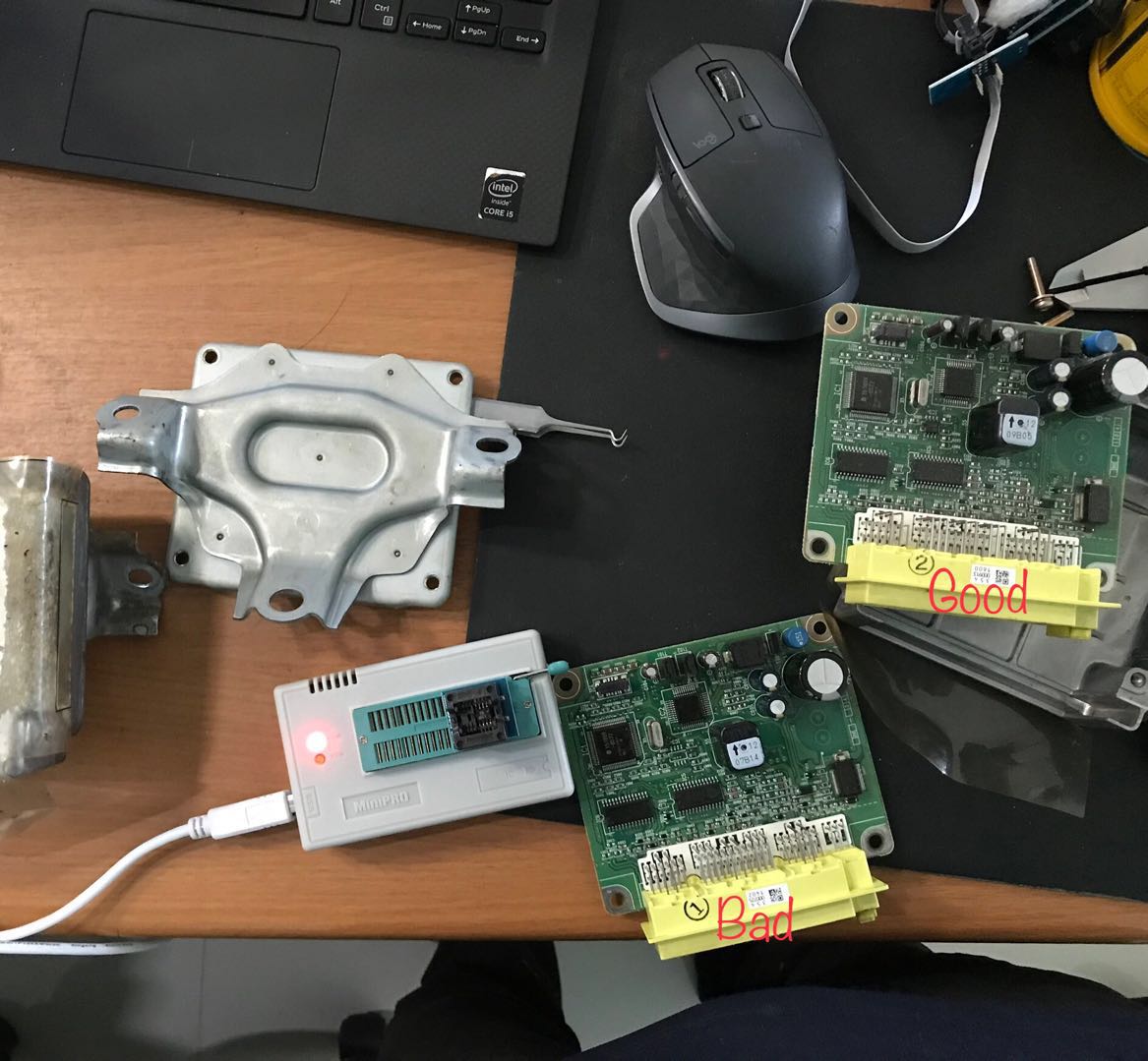Previous post Flatcam installing . Today, I'll show you the process of making 2-layer PCB.
- Trailing Zeros
-
Eagle uses Trailing Zeros in its Excellon number format but does not properly report this format in the Excellon file. To tell FlatCAM to use this format by default set this system option excellon_zeros to T by using the set_sys command in the Shell Command Line Interface as shown below:
set_sys excellon_zero T
Note
2018-05-18 : Current Flatcam source is having problem with this command. If need this functionality, use stable version.
- System unit
-
From options tab, select Units as mm.
Tip
Each object can be moved to arbitrary location. Select object and go to selected tab then find offset tool.
Load Gerber files:
copper_top.gbr
copper_bottom.gbr
soldermask_top.gbr
soldermask_bottom.gbr
profile.gbr
Load Excellon file:
drills.xln
Mirror axis for bottom layer stuff, from menu bar, Tool -> Double-sided PCB Tool. Create mirror axis around Y axis at location x = 50 mm:
Mirror Axis: Y
Axis Location: Point
Point/Box: (50,0)
Mirror bottom layer objects one by one from the drop-down menu and click "Mirror Object":
copper_bottom.gbr
soldermask_bottom.gbr
profile.gbr
drills.xln
Alignment Holes help align the pcb when we flip it over. Create holes with 6 mm in diameter at desired locations. Then click "Create Alignment Drill":
Alignment Holes: (110, -5),(110, 60)
Drill diam: 6
You can generate gcode to cut Alignment Holes following similar process of the next section below. You can skip this for now and do it later.
Hide all other layer except copper_top.gbr. Select this object then navigate to "Non-copper regions" section and generate geometry:
Boundary Margin: 0.1
New geometry "copper_top.gbr_noncopper" is created. Navigate to "Paint Area" and generate paint area:
Tool dia: 0.1
Overlap: 0.05
Margin: 0.1
Method: standard
Connect: yes
Contour: yes
Selection: All
New geometry "copper_top.gbr_noncopper_paint" is created. Navigate to "Create CNC Job" and generate toolpath:
Cut Z: -0.05
Travel Z: 1.0
Feed Rate: 250.0
Tool dia: 0.1
Spindle speed: 24,000
Multi-Depth: No
New geometry "copper_top.gbr_noncopper_paint_cnc" is created. Navigate to "Export G-Code" and export gcode.
Select "copper_top.gbr" and navigate to "Isolation Routing". Then generate geometry:
Tool dia: 0.145
Width(#passes): 1
Pass overlap: 0.0
Combine Passes: No
New geometry "copper_top.gbr_iso" is created. Navigate to "Create CNC Job" and generate toolpath:
Cut Z: -0.05
Travel Z: 1.0
Feed Rate: 250.0
Tool dia: 0.145
Spindle speed: 24,000
Multi-Depth: No
New geometry "copper_top.gbr_iso_cnc" is created. Navigate to "Export G-Code" and export gcode.
Select "soldermask_top.gbr" and navigate to "Isolation Routing". Then generate geometry:
Tool dia: 0.0
Width(#passes): 1
Pass overlap: 0.0
Combine Passes: No
New geometry "soldermask_top.gbr_iso" is created. Navigate to "Paint Area" and generate paint area:
Tool dia: 0.1
Overlap: 0.05
Margin: 0.1
Method: standard
Connect: yes
Contour: yes
Selection: All
New geometry "soldermask_top.gbr_iso_paint" is created. Navigate to "Create CNC Job" and generate toolpath:
Cut Z: -0.05
Travel Z: 1.0
Feed Rate: 400.0
Tool dia: 0.1
Spindle speed: 24,000
Multi-Depth: No
New geometry "soldermask_top.gbr_iso_paint_cnc" is created. Navigate to "Export G-Code" and export gcode. That's it for the top layer. Now flip over the PCB. The alignment holes helps keep PCB in correct position. The bottom-side non-copper area, isolation, soldermask are identical to the top layer.
In drills.xln's Tools selection, choose hole sizes needed for drilling, excluding those large holes which need milling. Holes larger than 1 mm in diameter, I will use milling process instead. So select:
0.406
0.61
0.95
1.016
In Create CNC Job section:
Cut Z: -1.95
Travel Z: 1.0
Feed Rate: 150.0
Tool change: yes
Tool change Z: 50
Spindle speed: 24,000
New geometry "drills.xln_cnc" is created. Navigate to "Export G-Code" and export gcode. Next, select drills.xln again and choose hole sizes for milling:
2.2
3.2
3.302
At Mill Holes section, generate geometry:
Tool dia: 1.5
New geometry "soldermask_top.gbr_iso_paint" is created. Navigate to "Create CNC Job" and generate toolpath:
Cut Z: -1.95
Travel Z: 1.0
Feed Rate: 150.0
Tool dia: 1.5
Spindle speed: 24,000
Multi-Depth: yes
Depth/pass: 1
New geometry "drills.xln_mill_cnc" is created. Navigate to "Export G-Code" and export gcode.
This is a bit tricky. We need the cut edges pass right through the middle of profile lines. The measurement tool indicates 0.254 mm line thickness. For 1.5 mm tool dia, we set Tool dia = 1.5 - 0.254 mm. In Isolation Routing, generate geometry with the calculated Tool dia:
Tool dia: 1.246
Width(passes): 1
Pass overlap: 0.0
Combine Passes: No
New geometry "profile.gbr_iso" is created. Delete the interior part by Edit Geometry > Add Rectangle on inner line > With Select tool, press CTRL and select Geometry and box respectively > Cut Path > Delete Shape both box and inner line > Update Geometry.
For small size PCB, you might need tabs to hold PCB in place while cutting. To do so, edit geometry > draw boxes on where you want tabs> cut path > delete boxes. This PCB is big enough so I will move on to Create CNC Job. Note that Tool dia is 1.5 mm this time:
Cut Z: -1.95
Travel Z: 1.0
Feed Rate: 150.0
Tool dia: 1.5
Spindle speed: 24,000
Multi-Depth: yes
Depth/pass: 1
New geometry "profile.gbr_iso_cnc" is created. Export G-Code. Now we are done with Flatcam.
Now we combine exported Gcode into a single file if they share the same cutting tool. A 0.1mm engrave bit is used for noncopper paint and isolation. A 0.6 and 0.9 mm drill bits are used for drilling. A 1.5 mm endmill is used for large holes and profile milling. This is example of my Gcode header:
G17
G54
G21
G90
$H
G00 X7.999700Y75.7321
M03 S24000
G4 P1
G00 Z1.0000
G01 Z-0.0500 F200.00
G01 X8.045600Y75.7418
.....
My CNC has Surface grid-probing feature which helps compensate uneven surface automatically. Simply specify area you wanna probe with G32. M374 save probe results for next time usage.:
G32 X-143.790000 Y-77.1287 A105. B55.
M374
G4 P1
G17
G54
G21
G90
$H
G00 X7.999700Y75.7321
M03 S24000
G4 P1
G00 Z1.0000
G01 Z-0.0500 F200.00
G01 X8.045600Y75.7418
...
Also Tool length probe with G38.2 and G10 for work coordinate. M500 save the settings for next time usage.:
G32 X-143.790000 Y-77.1287 A105. B55.
M374
G4 P1
G17
G54
G21
G90
G00 X4.000000Y74.000F2000.
G4 P1
G38.2 Z-20.
G4 P2
G10 L20 P1 Z0.
M500
G4 P1
$H
G00 X7.999700Y75.7321
M03 S24000
G4 P1
G00 Z1.0000
G01 Z-0.0500 F200.00
G01 X8.045600Y75.7418
Important
G32 utilize Machine coordinate system (G53 values)


